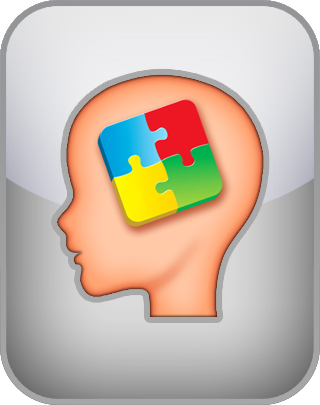Academically reviewed by Dr. Sabina Alispahić, Ph.D., professor of psychology
3 Minute Child Autism Test
Based on the work of Dr. Eric Schopler
Children with autism often display a wide range of symptoms and experiences, as the disorder can vary in severity and presentation. Some common characteristics of autism in children include impairments in social interaction, challenges in communication, restricted and repetitive behaviors, and sensory sensitivities.
Does your child exhibit symptoms of autism? For each of the following questions, indicate how well it applies to your child below.
Question 1 of 13
My child avoids eye contact.
| Disagree | Agree |
NEXT
The IDRlabs 3-Minute Child Autism Test (IDR-3MCAT) was developed by IDRlabs. The IDR-3MCAT is based on the work of Dr. Eric Schopler and colleagues who created the test “Childhood Autism Rating Scale”. The IDR-3MCAT is not associated with any specific researchers or authors in the field of abnormal psychology, special education, or any affiliated research institutions.
The IDRlabs 3-Minute Child Autism Test was informed by the tool, “Childhood Autism Rating Scale”, as published in Schopler, E., Reichler, R. J., DeVellis, R. F., & Daly, K. (1980). Toward objective classification of childhood autism: Childhood autism rating scale (CARS). Journal of Autism and Developmental Disorders, 10, 91–103.
Childhood autism, also known as autism spectrum disorder (ASD), is a neurodevelopmental disorder that affects communication, social interaction, and behavior. It is typically diagnosed in early childhood, before the age of three, and lasts throughout a person's lifetime. Autism is characterized by a wide range of symptoms and severity levels, which is why it is referred to as a spectrum disorder.
One of the primary symptoms of autism is difficulties in social interaction and communication. Children with autism may struggle with making eye contact, understanding and using nonverbal cues, and engaging in reciprocal conversation. They may also have a limited range of interests and engage in repetitive or stereotypical behaviors. Some children with autism may have intellectual disabilities, while others may possess exceptional skills in specific areas, such as mathematics or music.
The causes of autism are complex and not yet fully understood. It is believed to result from a combination of genetic and environmental factors. Research has shown that certain genes play a role in the development of autism, and it is more common in families with a history of the disorder. Additionally, prenatal factors such as maternal infections and exposure to certain medications have been identified as potential risk factors.
Early diagnosis and intervention are crucial for children with autism. The earlier the intervention, the better the chances of improving the child's communication, social skills, and behavior. Diagnosis is typically made through a comprehensive evaluation that assesses the child's development, behavior, and communication skills. Autism-specific therapies, such as applied behavior analysis (ABA) and speech therapy, are often recommended to help children with autism acquire new skills and manage challenging behaviors.
Support from parents, caregivers, and educators is essential in promoting the well-being and development of children with autism. Creating structured routines and environments can provide a sense of predictability and security, which can be beneficial for children with autism. Individualized education plans (IEPs) can be developed to cater to the unique needs of each child, ensuring they receive appropriate educational support.
It is important to remember that each child with autism is unique, and their abilities and challenges vary widely. Some children with autism may require more intensive support, while others may become more independent as they grow older. It is crucial to foster a society that promotes inclusivity, understanding, and acceptance for individuals with autism, allowing them to lead fulfilling lives and reach their full potential.
In recent years, there has been a growing awareness and acceptance of autism, leading to improved resources and support for individuals and families affected by the disorder. Continued research and understanding of autism spectrum disorder will further contribute to the development of effective interventions and strategies to enhance the lives of children with autism.
The work of Dr. Schopler and his colleagues has also informed some of the diagnostic criteria in the form of the aforementioned assessment tool. The present test is intended for educational purposes only. IDRlabs and the present IDRlabs 3-Minute Child Autism Test are independent from the above researchers, organizations, or their affiliated institutions.
The 3-Minute Child Autism Test is based on a widely used assessment tool. However, free online tests and quizzes such as this one are solely first takes and cannot provide accurate assessments of your child’s condition. Hence, the test is intended to be used for educational purposes only. A definitive assessment can be made only by a qualified professional.
As the publishers of this free online 3-Minute Child Autism Test, which allows you to screen your child for the characteristics of this relationship, we have strived to make the test as reliable and valid, as possible, by subjecting this test to statistical controls and validation. However, free online quizzes such as the present 3-Minute Child Autism Test do not provide professional assessments or recommendations of any kind; the test is provided entirely “as-is.” For more information about any of our online tests and quizzes, please consult our Terms of Service.
References
- Park, E. Y., & Kim, J. (2016). Factor structure of the childhood autism rating scale as per DSM-5. Pediatrics International, 58, 139–145.
- Schopler, E., Reichler, R. J., DeVellis, R. F., & Daly, K. (1980). Toward objective classification of childhood autism: Childhood autism rating scale (CARS). Journal of Autism and Developmental Disorders, 10, 91–103.
- Schopler, E., Van Bourgondien, M., Wellman, G., & Love, S. (2010). Childhood autism rating scale-second edition (CARS2): Manual. Los Angeles: Western Psychological Services.

